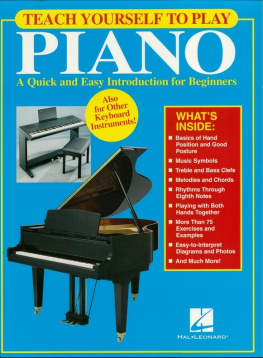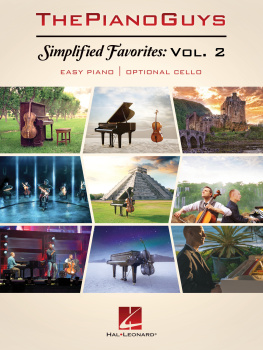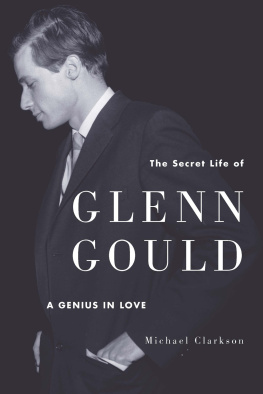
Contents
For Brad, who saw me through.
And for my mother, cheerleader extraordinaire.
Prologue
Ottawa, 1983
It arrived in a LARGE moving van: 226 cartons filled with objects that, had they belonged to anyone else, could just as easily have been destined for a landfill. Each box contained thousands of loose sheets of yellow-lined paper covered with a nearly indecipherable scrawl in black felt-tip pen. And scores of the pens themselves.
The boxes also contained hundreds of cassette tapes, hotel-room and rental-car keys by the dozen, a deck of playing cards, two wristwatches, a collection of porcelain dogs (mostly collies), a number of stray cuff links and leather wallets, three conductors batons, one mug inscribed DONT SHOOT THE PIANO PLAYER, photographs, radio scripts, canceled checks, badly frayed shirts and trousers, two pairs of beige woolen gloves without fingertips, gray woolen cardigans, a pile of undershirts, two tweed caps, and countless bottles filled with prescription drugs: pills for blood pressure, colds, joint pain, insomnia, and circulation.
There was also a large box that had been shipped by Steinway & Sons years earlier; it was filled with a complete set of piano hammers. Inside the drawer of a small table that was part of this ragtag collection were twelve wooden blocks that were used for raising the height of various pianos.
But the most famous artifact that arrived in the van was the pygmy chair, a battered, stout, unusually low wooden folding chair that was held together with brackets, glue, and piano wire. The chair had once had a padded seat, but that was now long gone. The only way a person could keep from falling through it while seated was to perch on a lone wooden support that ran from front to back.
These were the collected belongings of Glenn Gould, the brilliant and eccentric Canadian pianist, one of the countrys leading cultural treasures, who had died in 1982 at the age of fifty. His abbreviated life had been punctuated by idiosyncrasies unusual even for a classical musician. After a brief but meteoric concert career, in 1964, at the age of thirty-one, he had renounced public life, confined himself to his native Toronto, and dedicated himself to the recording studio. His particular achievements in playing the works of J. S. Bach as well as certain lesser-known composers of twentieth-century music, along with his odd personality, had captured worldwide attention and passionate fans.
Goulds playing evoked a visceral response from people who had never thought to stop and really listen to classical music. There was something about the silence between and behind each note, the richness of the different voices, that captured the imagination and caused listeners to feel that their lives had been deepened and enhanced. Thousands of people over the years had heard Goulds best-selling 1955 recording of Bachs Goldberg Variationsthe little air and its thirty virtuosic variationsand became lifelong fans.
For some, including people who knew the music well, Goulds playing enabled them to hear new things. Others, including those who had no special affinity for classical music, reported feeling an intuitive connection to the music when they first heard Gould playing. Bruno Monsaingeon, a French filmmaker and violinist, was in a record store in Moscow in the late 1960s when he chanced upon a couple of recordings by Gould, whose playing was unfamiliar to him. When the filmmaker listened to the records, he likened the experience to a religious epiphany, as if a voice were saying, Follow me. Monsaingeon would devote the next two decades of his life to making films about Gould. A heart surgeon in London encouraged every patient to listen to Goulds recordings of Bach before he operated. A UPS driver in Roanoke, Virginia, told a Gould scholar about the moment when a few phrases of the Goldberg Variations came over the trucks radio station and she instinctively began to reach for the dial to change to a different station. But she was turning a corner and needed both hands on the wheel, so the music continued. And continuedtransforming her into a lifelong devotee of Goulds work.
Goulds sudden death from a stroke was one that no one, least of all Gould, had had time to prepare for. Once the decision was made by his lawyer to send all of his possessions to the National Library of Canada in Ottawa, the task of sorting through everything fell to a library-staff member and an outside music expert who was hired to help. Having disposed of the impersonal objectstelephone books, take-out pizza menus they worked their way through the mountain of personal miscellany and began to feel that throwing anything away would be sacrilegious, in part because the great Gould himself had been unable to part with it. So they sent every last scrap of yellow-lined paper, every Christmas card and bottle of aspirin, to Ottawa, to the National Library, the countrys repository of national treasures.
Curators and musicologists would spend the next several years sorting through the papers and the music, eventually transferring much of it to microfilm to save the originals from being handled by biographers and curiosity seekers. Some of the artifacts, such as clothing, wallets, figurines, and keys, were eventually sent to the Canadian Museum of Civilization, just across the Ottawa River in Gatineau, Quebec. After a few years the curators placed the pygmy chair, the only form of seating that Gould would use while playing the piano, in a glass display case, where it assumed a ghostly presence next to the elevators on the archives fourth floor.
And then there was the piano, which the National Library had decided to purchase from Goulds estate. An eight-foot-eleven-and-one-quarter-inch Steinway concert grand, it was known as CD 318 (C to signify its special status as having been put aside for the use of Steinway concert artists, and D denoting it as the largest of Steinways pianos). Like every Steinway piano, it bore its own serial number: 317194. Helmut Kallmann, the head of the librarys music division, oversaw the delivery of CD 318 and later described how all 1,325 pounds of it were unloaded by three expert burly movers and unceremoniously deposited in the ground-floor lobby of the library. They untied the straps, removed the pads, attached the legs, requested a signature, and left.
A musician himself, Kallmann was a devotee of Goulds work. In the 1960s, he had occasionally crossed paths with Gould at the Canadian Broadcasting Corporation, where Kallmann supervised the music library. Gould showed up from time to time to pick up musical scores and often stopped to chat. The pianists eccentricities were always evident, as was his charm. Gould once endeared himself to Kallmann by asking, What key do you think my personality is in?
Like most Gould fans, Kallmann was familiar with the pianists legendary Chickering, a one-hundred-year-old small grand that Gould had famously adored. But when it came time to purchase one of Goulds pianos for the National Librarys permanent collection, Kallmann and his colleagues in the music division knew it had to be CD 318, the piano that had seen Gould through nearly every recording of his career.
Steinway had made many beautiful instruments over the yearsnot just the classic ebonized concert grands, but also a number of art-case pianos. Among the best-known are an elaborate white-and-gilt decorative piano made for Cornelius Vanderbilt, with paintings of Apollo surrounded by cherubs, and a piano created for the White House, with legs formed of carved eagles. For the Waldorf-Astoria Hotel in New York, Steinway had built a tortoiseshell decoration surmounted by a candelabrum. For the oil magnate E. L. Doheny, the company designed a gilded piano in a Louis XV style with carved legs and elaborate moldings. Even Steinways standard-issue polished-ebony concert grands were stately and handsome, if also austere.










